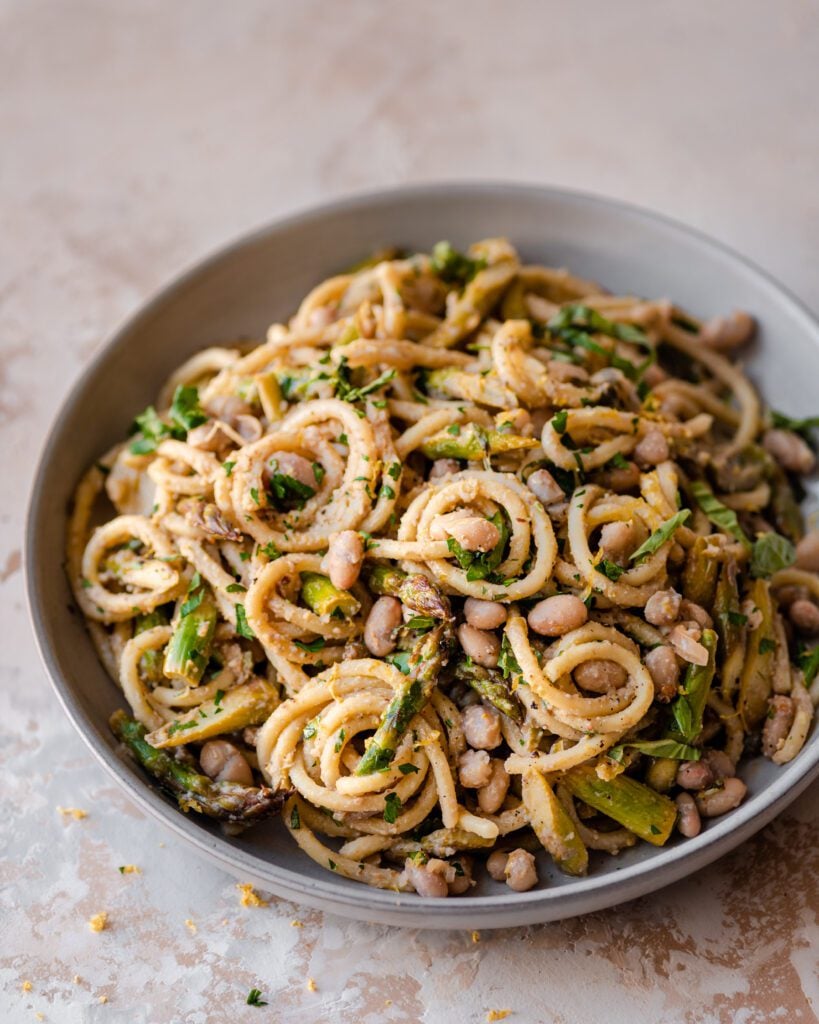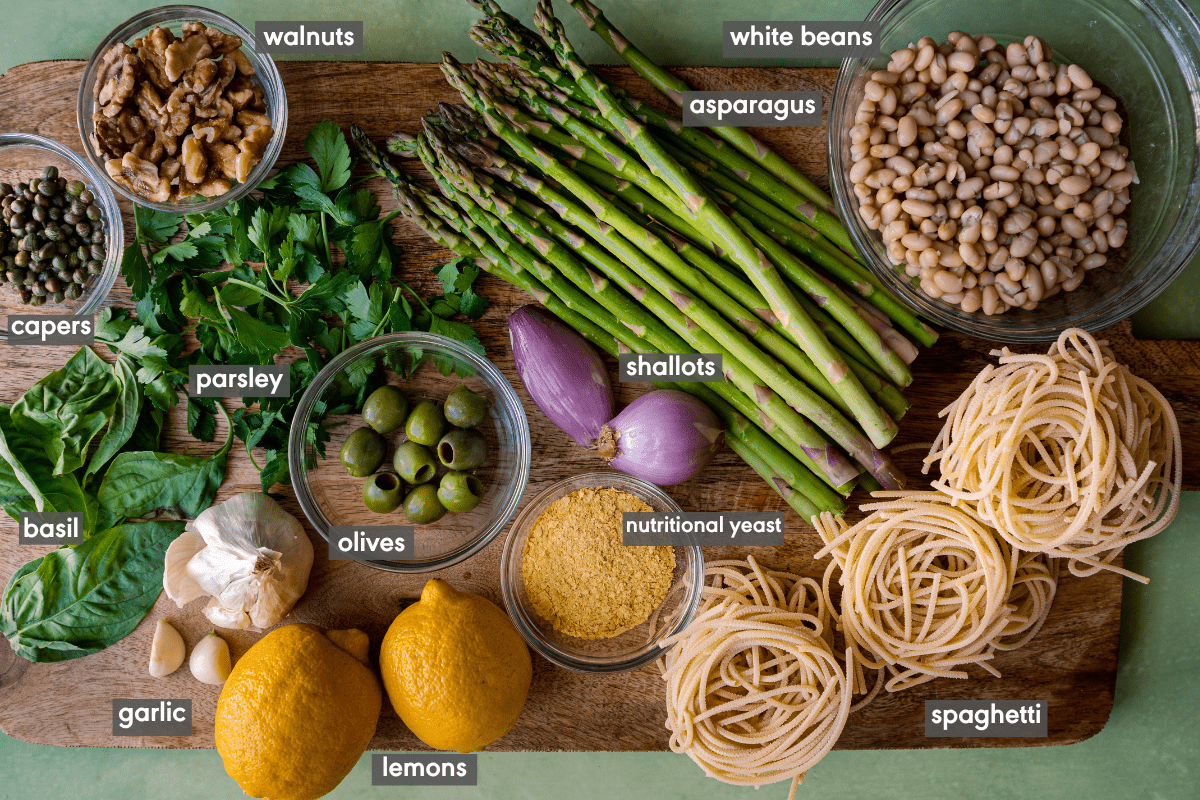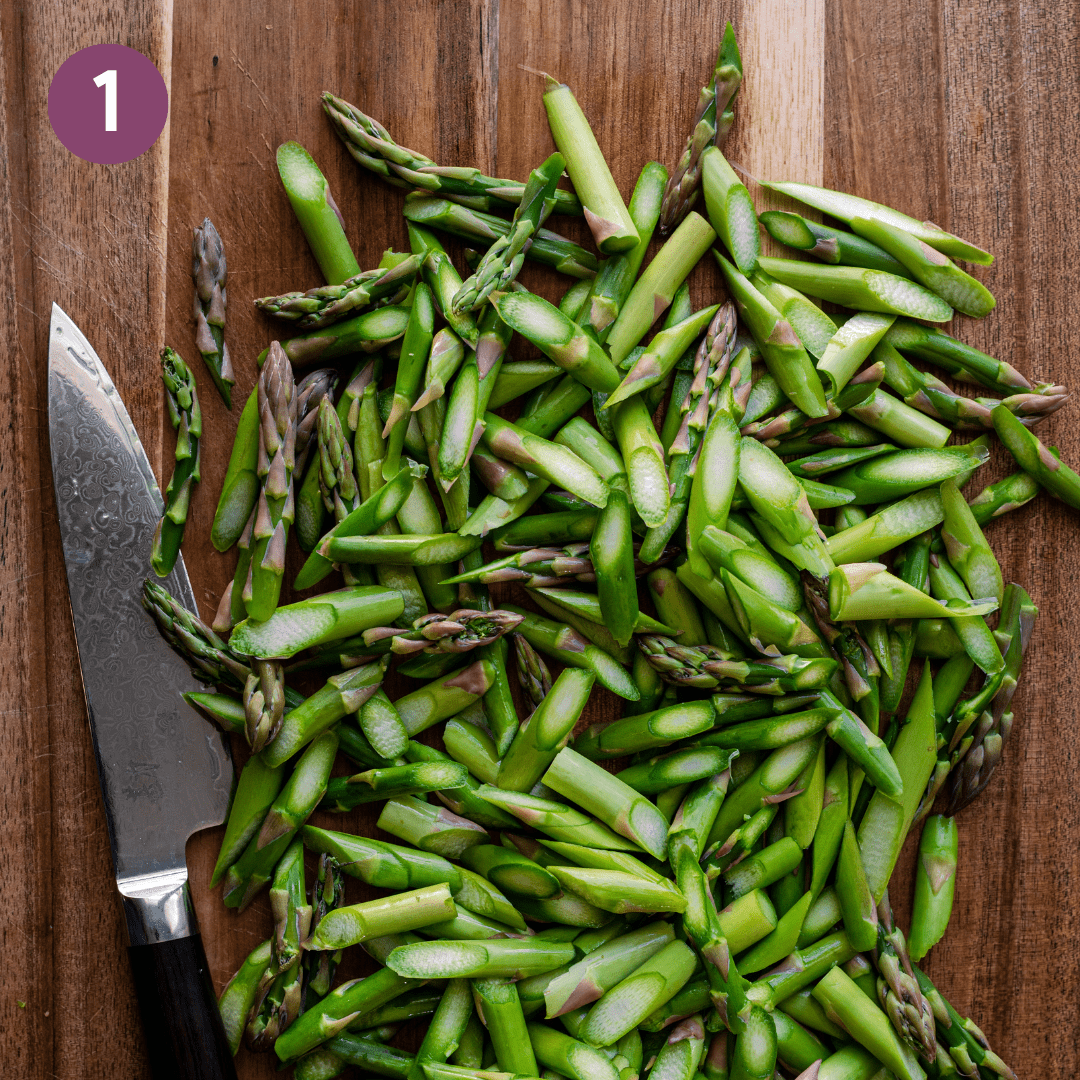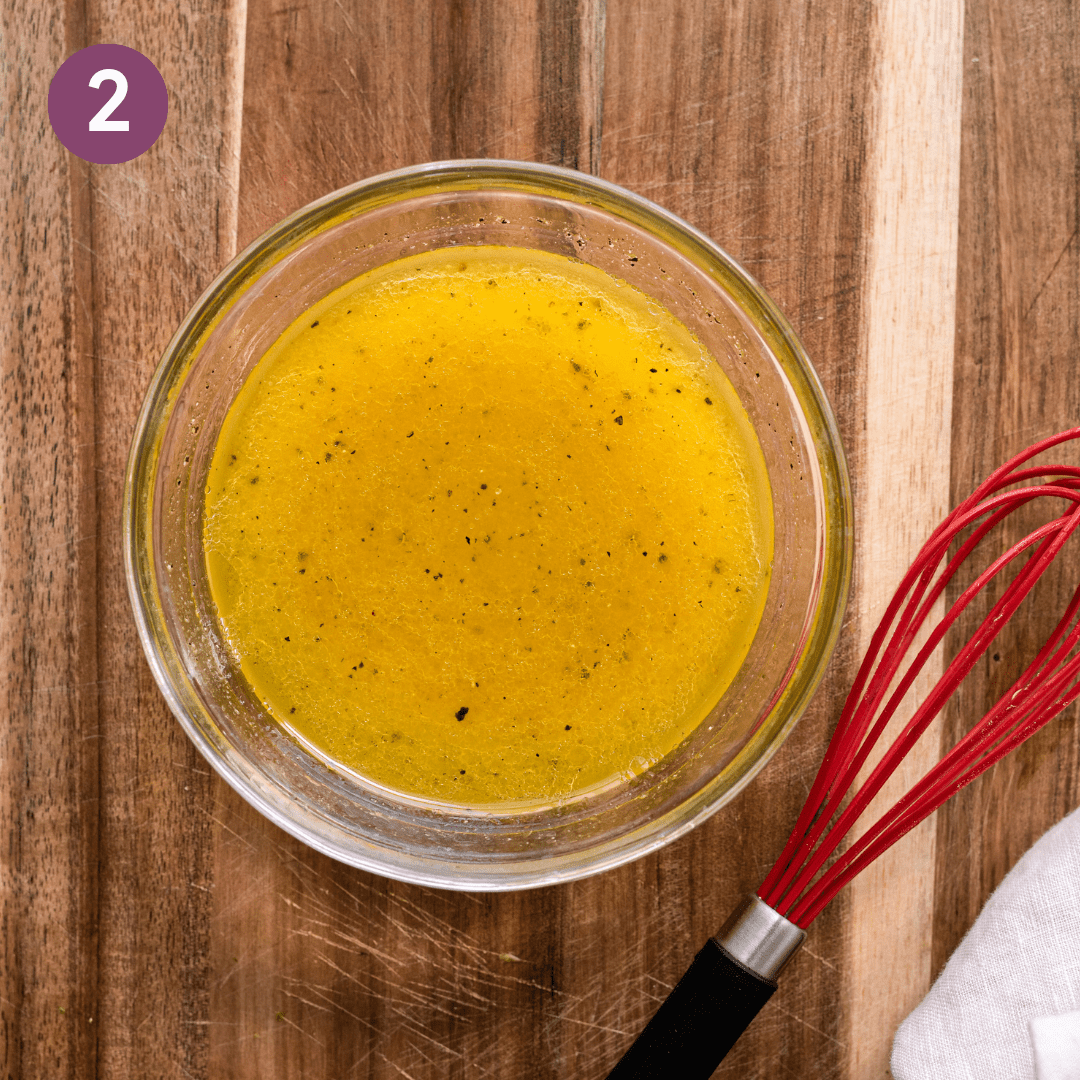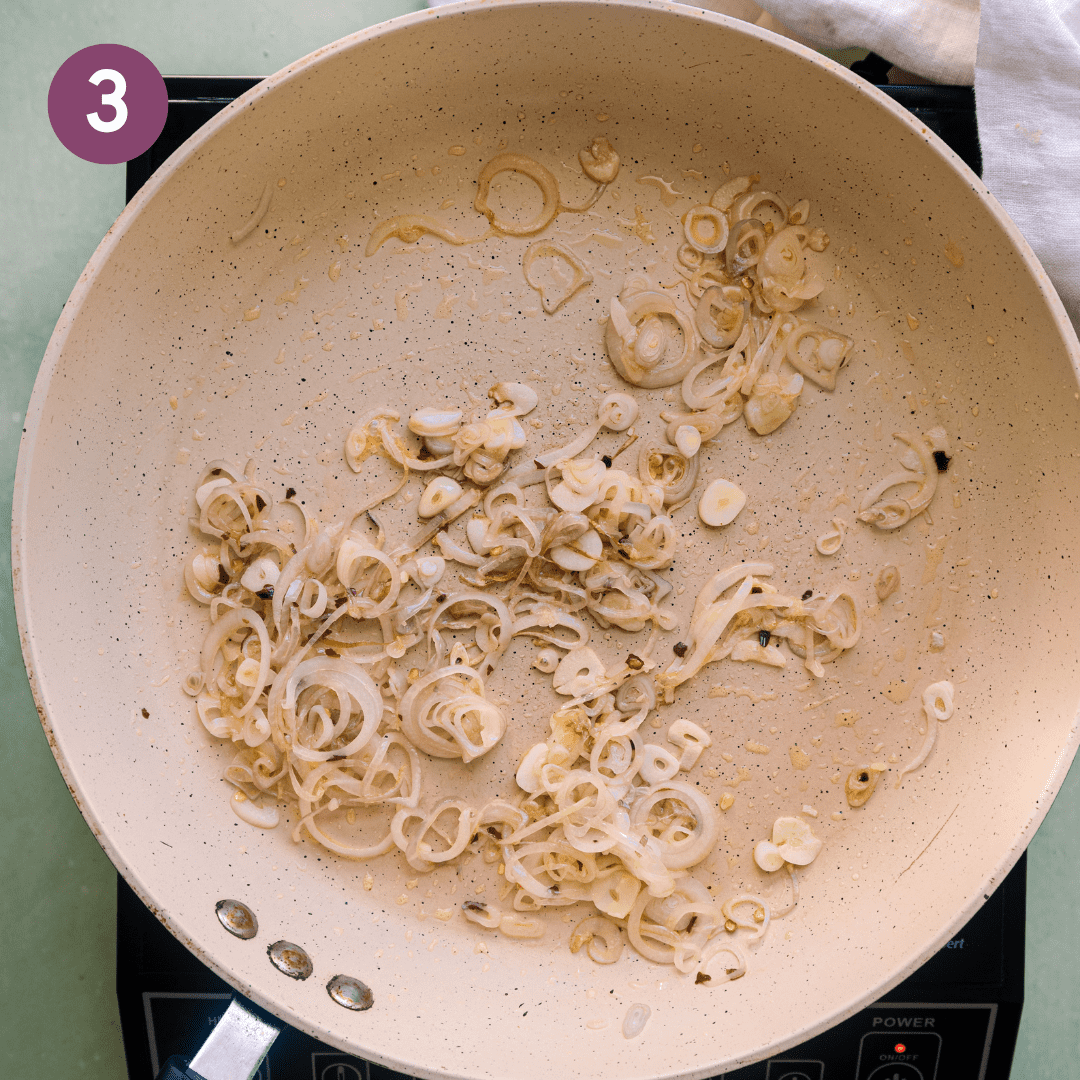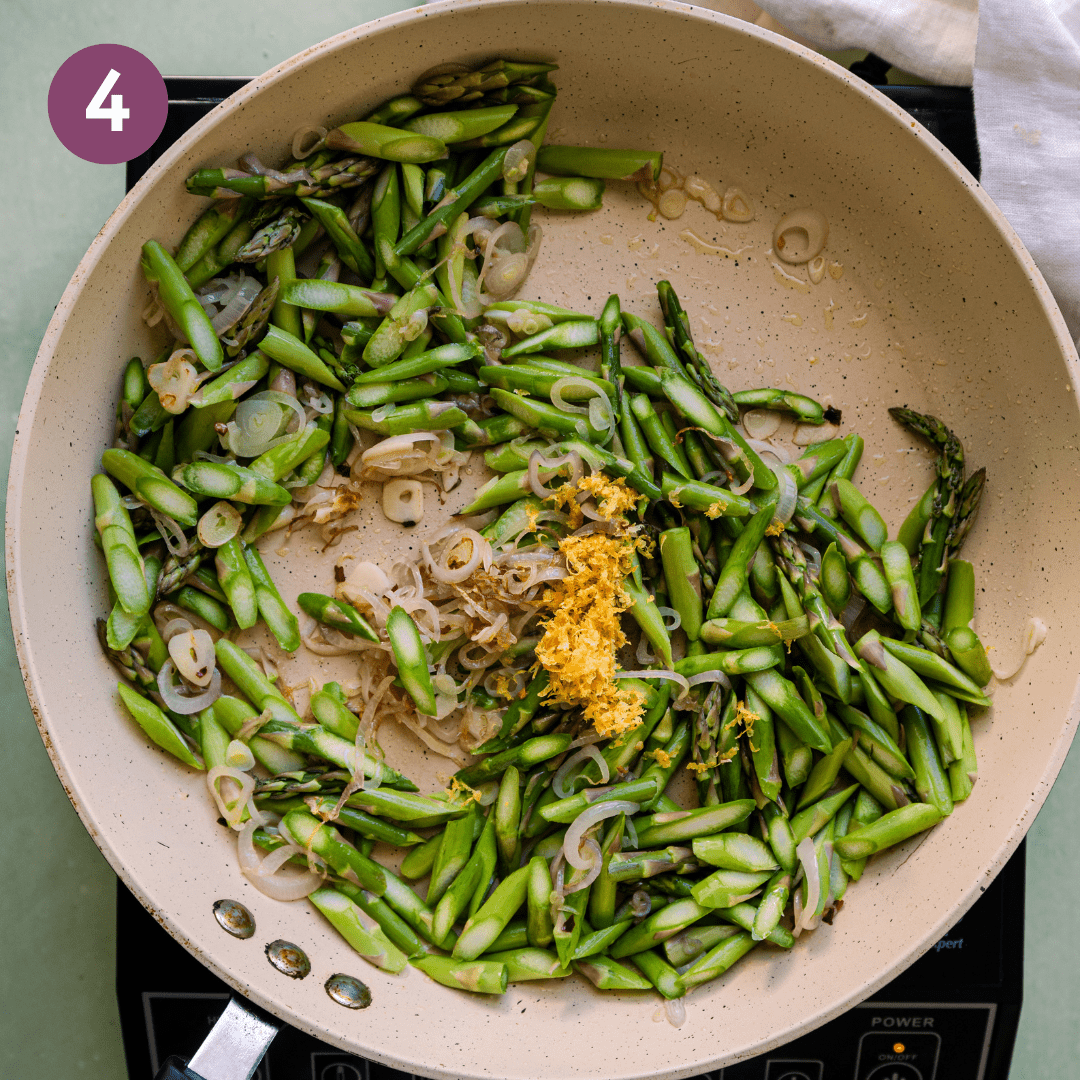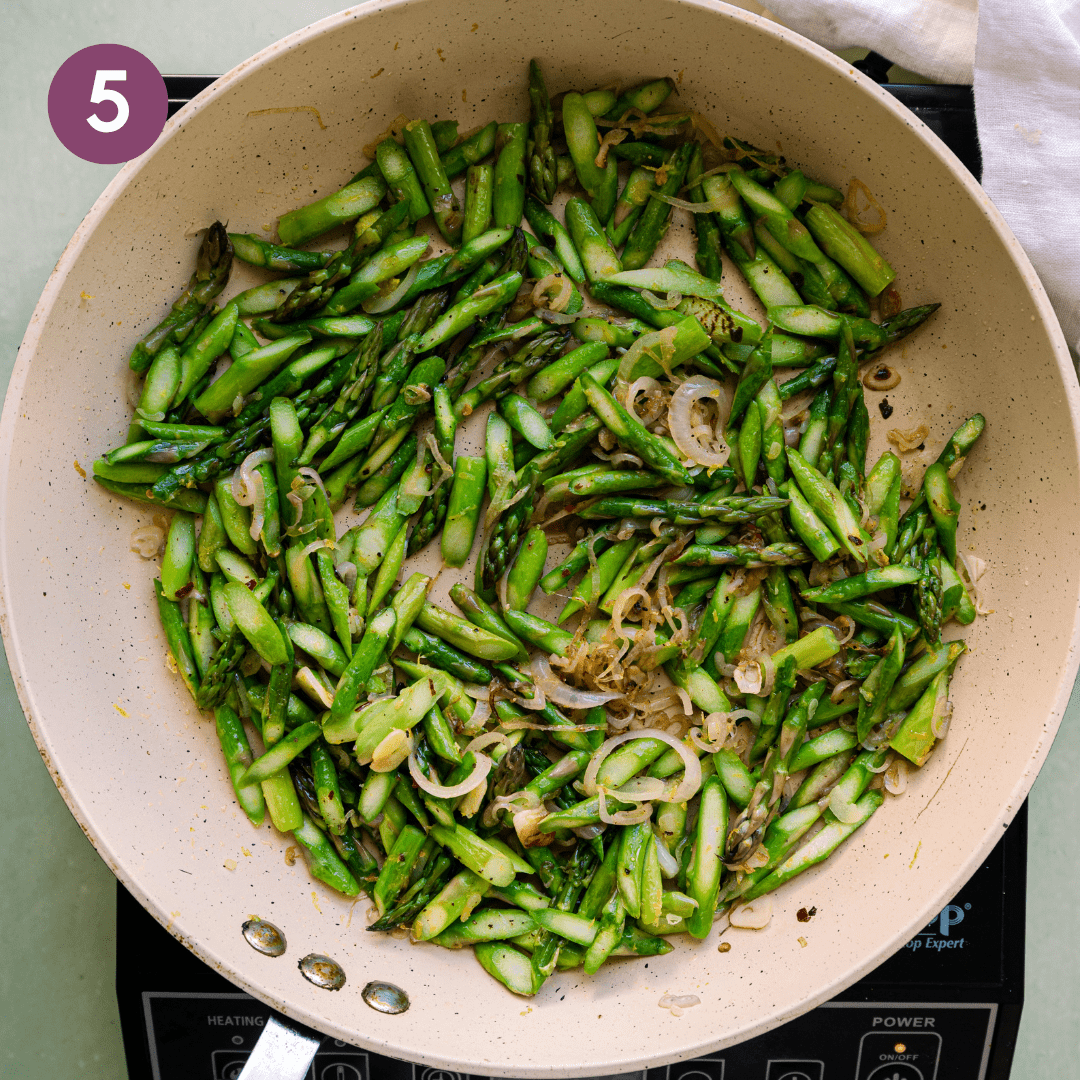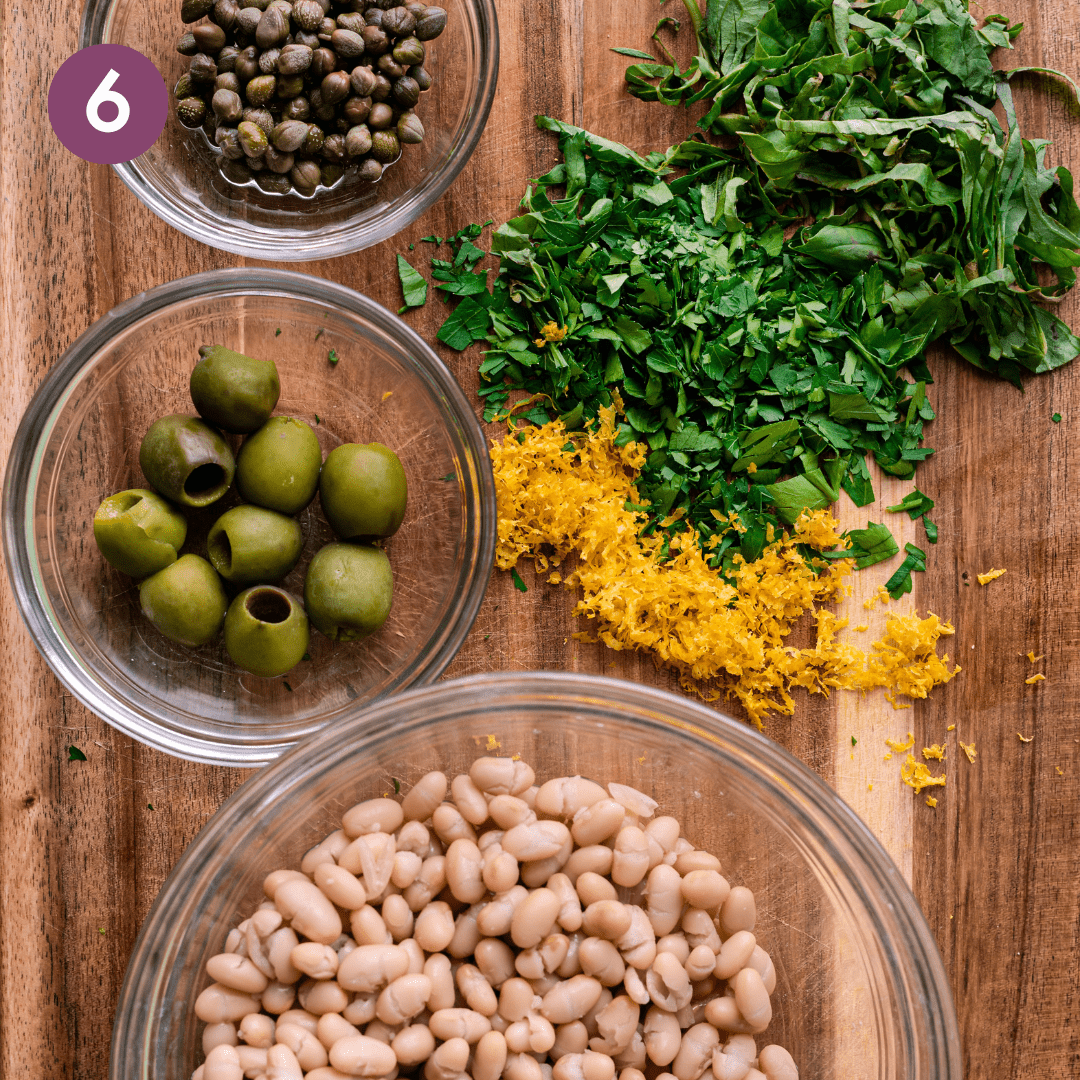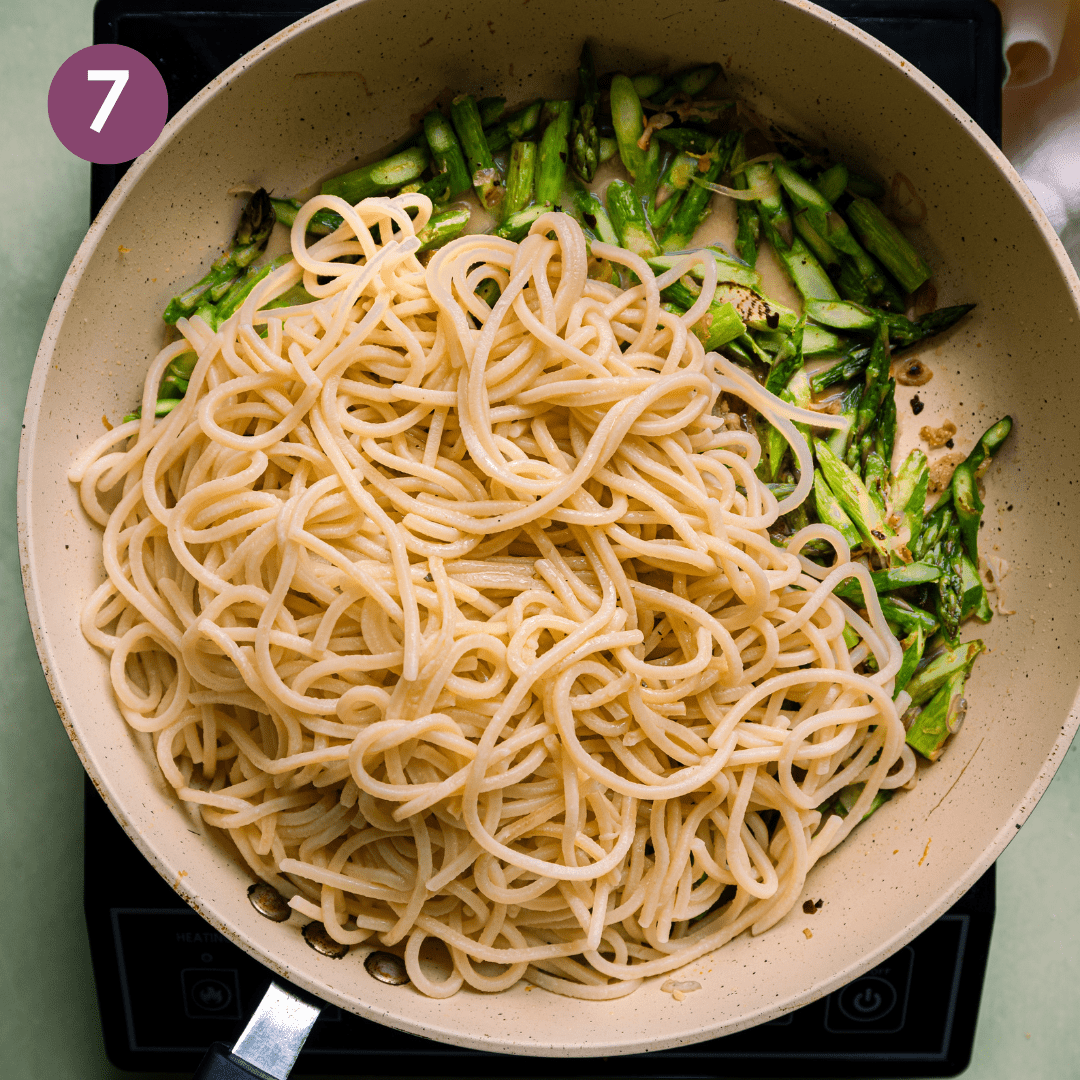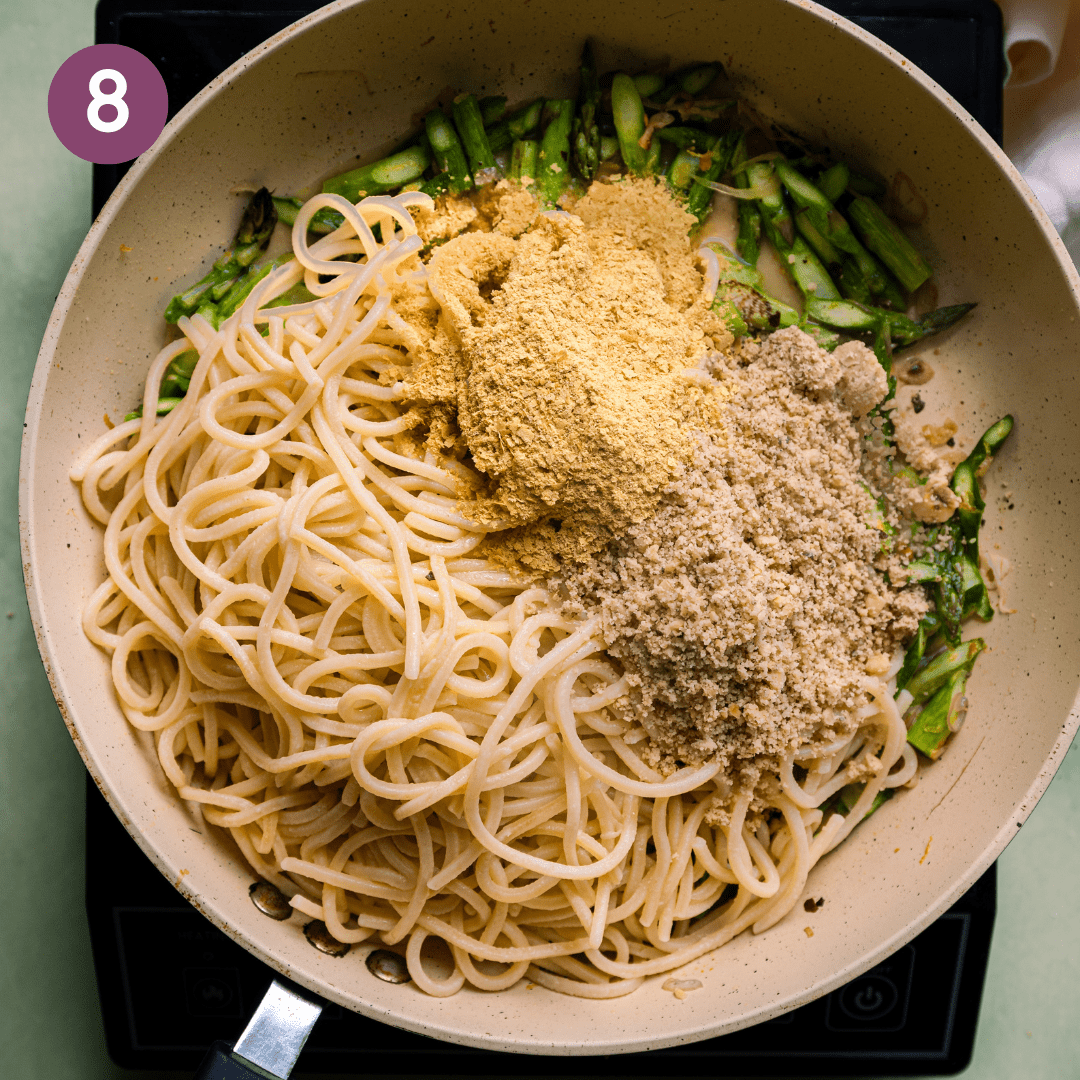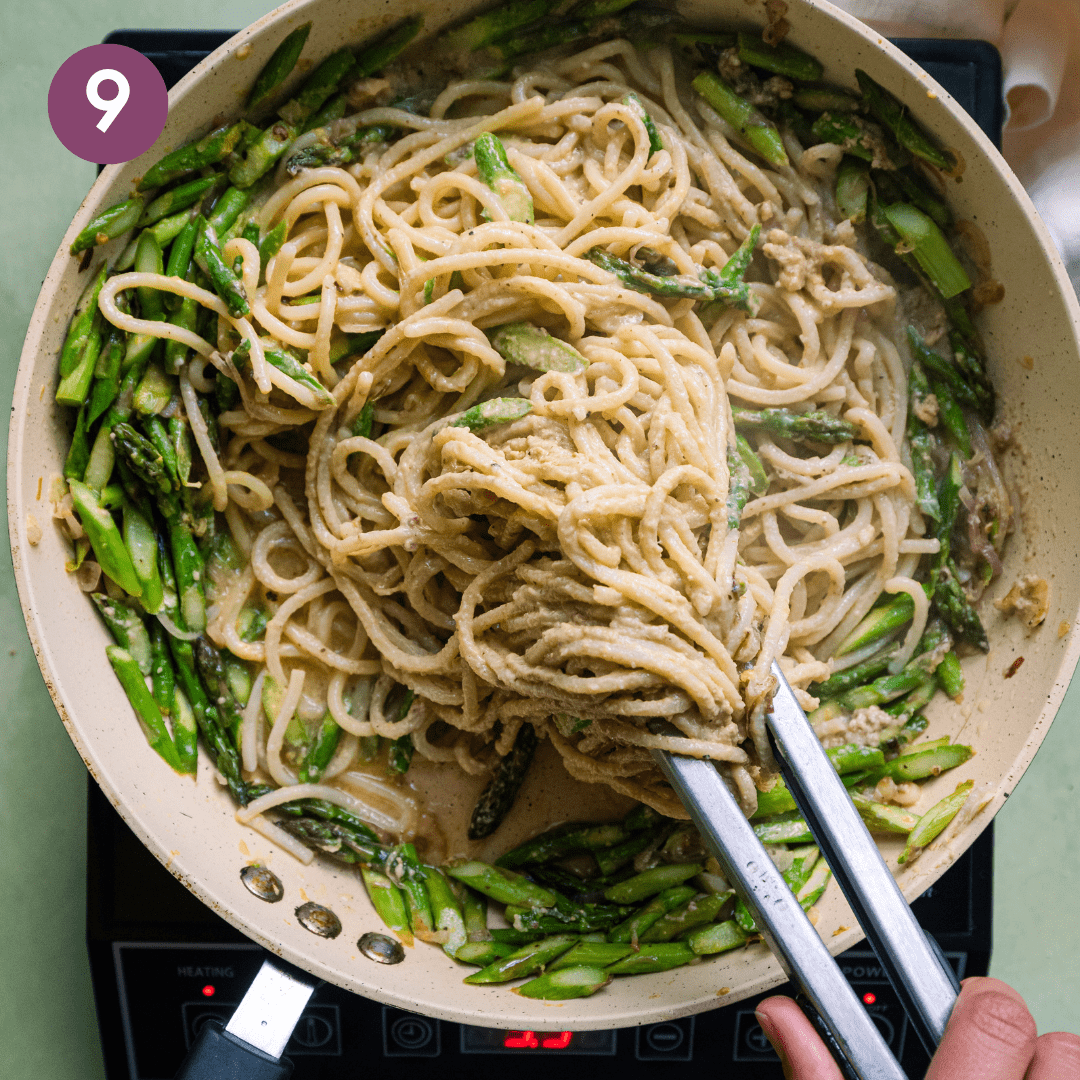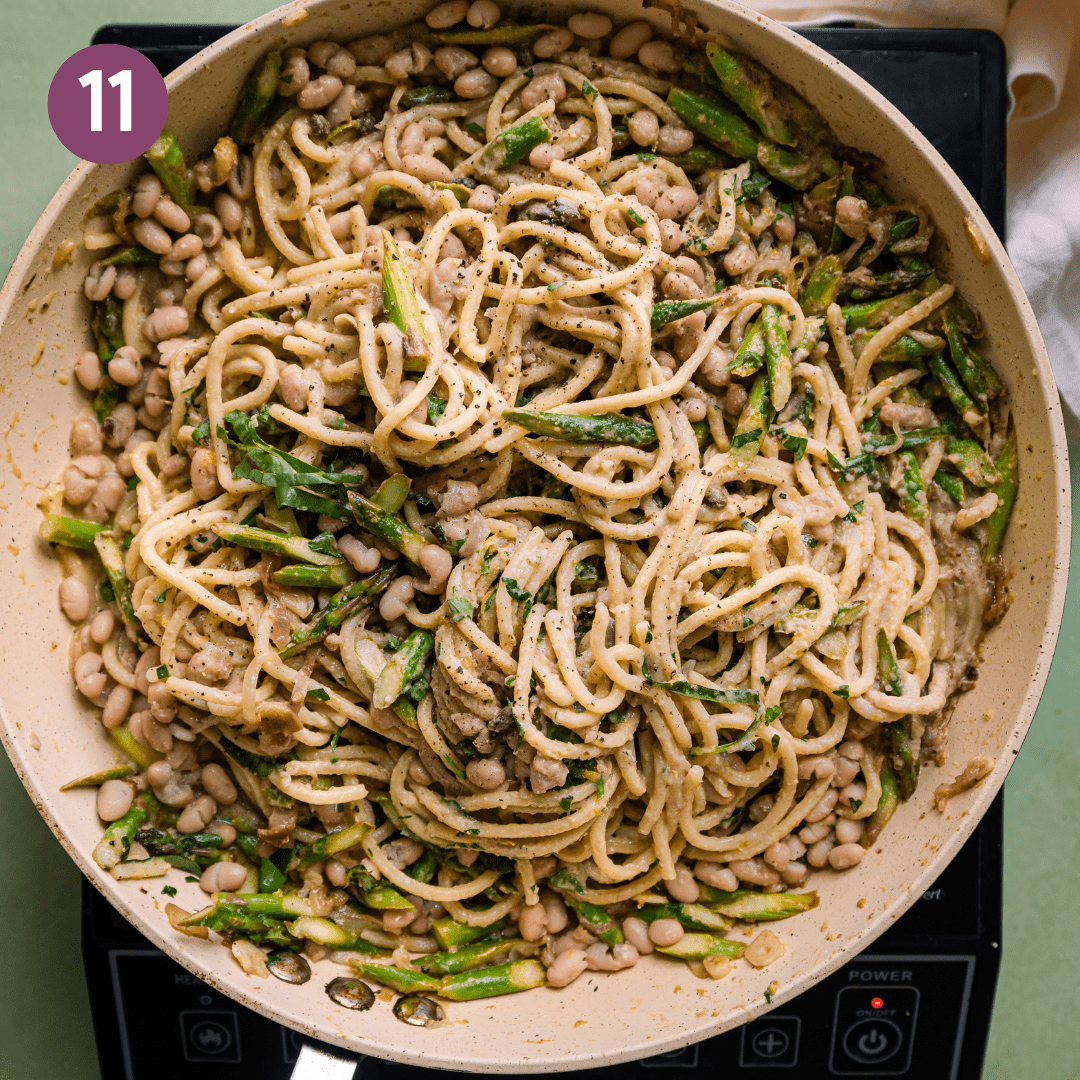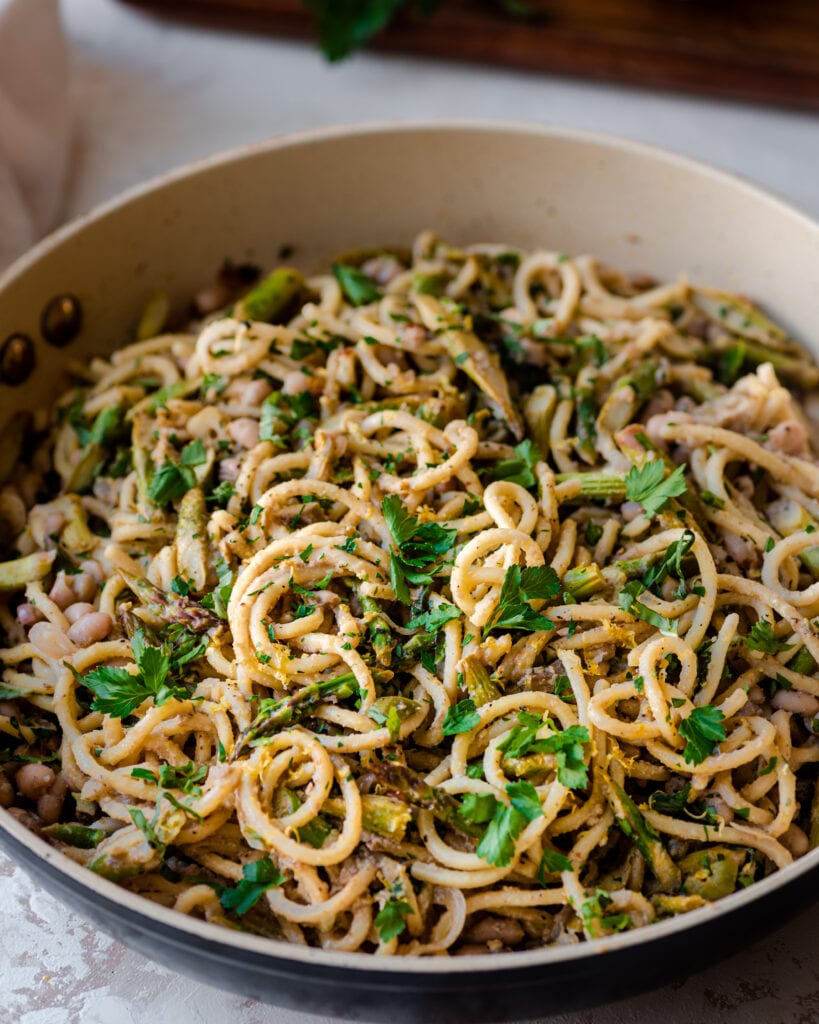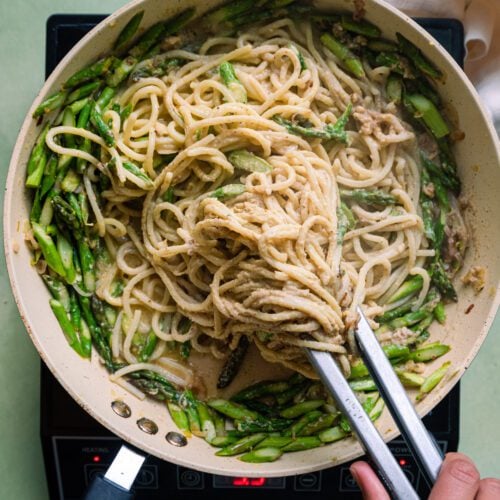The creamy sauce is made with a combination of olive oil, pasta water, and walnuts, creating a velvety texture that will leave you wanting more. And the best part? It’s naturally dairy-free and vegan! As soon as asparagus comes into season, this lemon asparagus pasta recipe is a must-try. It’s fresh, flavorful, and perfect for any occasion. Whether you’re looking for a quick weeknight meal or a fancy dinner party dish, this recipe is sure to impress. So grab your apron and let’s get cooking!
Why this recipe works
Perfect marriage of spring flavors.
Inspired by Evan Funke’s Spaghetti al Limone, this pasta has all the best flavors of spring. With the juice and zest of two whole lemons, this pasta is delightfully lemony, while the addition of basil and parsley lends it an herbaceous note. Capers and olives add a zingy, briny flavor (but feel free to leave them out if you prefer), while the crushed walnuts provide a slight nuttiness. And of course, we can’t forget the star of the show – asparagus, the king of spring!
A great way to cook asparagus
In season asparagus doesn’t need much help to taste amazing. Here, asparagus gets lightly pan-fried in olive oil alongside shallots, garlic, and lemon zest. The result is a wonderful crisp-tender texture, which is a nice contrast with the creamy pasta.
Gourmet but easy
This is the kind of dish you might find at a fancy restaurant but it’s simple to make at home! With prep time included, you can get this dish on the table in 45 minutes.
Ingredient notes and substitutions
Asparagus
One of my favorite spring vegetables, it works wonderfully here alongside the other flavors. If it’s not in season where you are, feel free to swap it out for another green vegetable. Broccoli, brussel sprouts, or even legumes like green beans or snap peas would work well here.
Spaghetti
Spaghetti is the classic pasta option here but any noodle or ribbon shaped pasta would work well here (fettucine, bucatini, linguine, etc.).
Walnuts
Walnuts are a fantastic plant-based source of umami. Here, they get finely ground which helps them cling to the olive oil sauce, much in the same way parmesan cheese does. Alongside the nutritional yeast, walnuts provide a great savory backbone to this dish.
Olives and Capers (optional)
I know olives can be divisive, so please feel free to leave them out if you can’t stand them. But Castelvetrano olives–the olives in this recipe–are very mild in flavor so you might want to give them a try.
Extra Virgin Olive Oil
Use a good-quality extra virgin olive oil, as it’s the primary ingredient in the sauce. Good quality doesn’t need to be expensive though (I used the California Olive Ranch extra virgin olive oil (affiliate link) – a great olive oil for everyday use).
White beans
While the dish is still satisfying without them, white beans are an optional ingredient that provides some serious heft and protein. Don’t have white beans? Navy beans would also be a fine choice.
How to make this recipe
Trim the asparagus and discard the tough woody ends. Slice each asparagus spear deeply on the diagonal into pieces (about 1/2 to 1 inch). Make the Lemon Sauce. Juice the two lemons into a jar. Add the Dijon mustard, extra virgin olive oil, and salt/pepper. Shake vigorously until emulsified. Or, whisk all the ingredients together in a bowl. Heat a bit of extra virgin olive oil in a 12-inch sauté pan (or Dutch oven). Cook the sliced shallots and garlic cloves until golden. Add the red pepper flakes (if using) for 30 seconds. Add the sliced asparagus and half of the lemon zest (from one lemon). Cook for 3 minutes, until asparagus is crisp-tender. Take off the heat and let sit until the pasta is ready. Cook the pasta in a pot of boiling salted water. While cooking, prepare the rest of the ingredients. Chop the basil and parsley, slice the olives, crush the walnuts, rinse and drain the white beans (if using). Once the pasta is just al dente, reserve up to 1 cup of the cooking water, then drain (do not rinse!). Transfer the hot cooked pasta and Lemon Sauce to the pan with the asparagus. Add the crushed walnuts and nutritional yeast. Pour in 1/2 cup (120 mL) of pasta water and return the pan to medium-high heat. Use tongs to toss the mixture quickly and vigorously, until emulsified. Add more pasta water as needed. Add the remaining ingredients – basil, parsley, capers and olives if using, remaining lemon zest (from one lemon), and white beans (if using). Toss again to combine and briefly cook. Serve warm.
Tips for making this recipe
Use less water than you’d think.
Without any cream or cheese, we need a very starchy pasta water to bind our sauce together. To achieve this, use a bit less water to cook the pasta than you might typically use. For 10 to 12 ounces (285-340g) of pasta, that translates to about 9 cups (~2.1 liters/quarts) of water. And of course generously salt the pasta water – about 2 to 3 teaspoons kosher salt (use less if using table salt or sea salt) to ensure the pasta itself has flavor from within.
Cook the pasta until just al dente.
Aim to remove the pasta from the water as soon as it’s al dente, or even a minute beforehand, as the pasta is going to continue to cook in the lemon sauce for a few minutes. Otherwise, the texture might be a bit overdone. For the sauciest texture, enjoy this pasta shortly after making it. That’s not to say the leftovers aren’t tasty. They are. But this dish is the most luscious when eaten on day one. The color also starts to fade after a few hours.
Choose the right pan.
When cooking the shallots, garlic, and asparagus, use a large 12-inch sauté pan with relatively deep sides, or a Dutch oven. All of the pasta and mix-ins will be added into this pan at the end, so it helps to have a large enough pan to avoid any spills or mess.
Make it quicker with the right tools.
While you can definitely use a sharp knife to slice the shallots and walnuts, you’ll save some time by using (1) a mandoline for the shallots (and garlic, if the cloves are on the large side and you have a handheld mandoline slicer like this); and (2) a spice grinder to pulse the walnuts a few times until mostly crushed. In the mood for even more pasta? I’ve rounded up 30 of the best vegan pasta recipes from around the web! There are so many great choices, though I’m partial to the Lentil Bolognese during winter and the Vegan Pasta Salad in summer. Check it out! If you love this Lemon Asparagus Pasta, please be sure to leave a rating and review below! It’s always much appreciated :) And tag me on Instagram – I love seeing your remakes!
Big Vegan Flavor
Techniques and 150 recipes to master vegan cooking.
